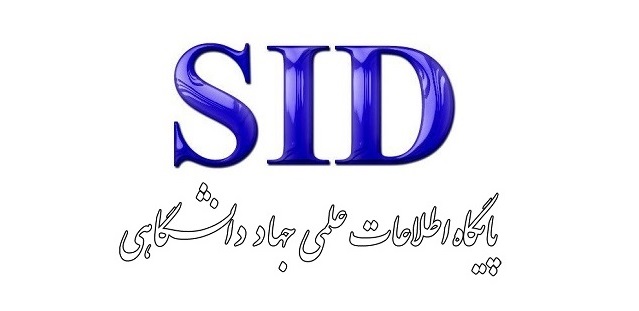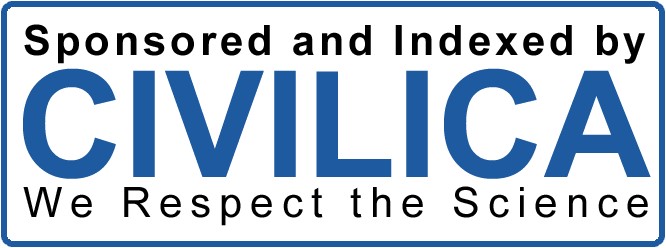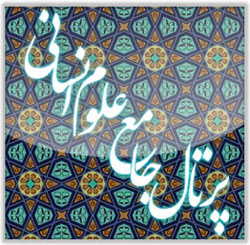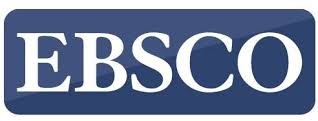Analyzing the Role of the European Union’s Innovative Financial Instruments in the Sustainable Development of Iran’s Economy: A Case Study on Guarantees and Investment Funds
Keywords:
Sustainable developmentAbstract
Due to limited access to international capital markets and the insufficiency of traditional aid mechanisms, Iran requires new financial resources to overcome economic crises and achieve sustainable development. This article examines the role of the European Union’s guarantees and investment funds in enhancing Iran’s sustainable development and economic resilience. The limitations of traditional assistance—such as inflexible financing and sector-specific restrictions—are discussed to underscore the necessity of innovative financial mechanisms. Utilizing a descriptive-analytical and library-based methodology, the study explores the impact of EU financial tools, including the European Investment Bank and the European Investment Fund, on stimulating investment, supporting strategic projects, and improving access to financial resources for small and medium-sized enterprises (SMEs) in Iran. The analysis also emphasizes challenges such as political tensions, sanctions, and bureaucratic obstacles. The findings indicate that EU guarantees and investment funds can offer more flexible and innovative financing solutions capable of attracting larger volumes of capital, including private sector investments. These instruments are able to target strategic sectors essential to sustainable development, and through long-term support, they can promote knowledge transfer, strengthen economic resilience, and accelerate transformative growth in Iran.
Downloads
References
A.I, S., & I.V, S. (2018). USA, EU – THE PROBLEM OF IRAN: BETWEEN “HARD” AND “SOFT” POWER. World Economy and International Relations, 62(8), 5-15. https://doi.org/10.20542/0131-2227-2018-62-8-5-15
Abdullah, A. (2021). Analisis Perubahan Kebijakan Luar Negeri Iran Menyepakati JCPOA pada Masa Pemerintahan Hassan Rouhani. Jurnal ICMES, 5(1), 1-21. https://doi.org/10.35748/jurnalicmes.v5i1.91
Alhassan, A. L., & Zeka, B. (2024). Development finance: how it works, where it goes, why it’s needed. The Conversation. https://theconversation.com/development-finance-how-it-works-where-it-goes-why-its-needed-227085
Bachtler, J., & Mendez, C. (2016). EU Cohesion Policy and European Integration. Routledge.
Bondarevskaya, X., & Vladislav, Z. (2019). TENDENCIES OF DEVELOPMENT OF FOREIGN ECONOMIC RELATIONS OF UKRAINE UNDER THE INFLUENCE OF INTEGRATION PROCESSES. Pričornomorsʹkì ekonomìčnì studìï(47). https://doi.org/10.32843/bses.47-2
Cansu Sarkaya, I. (2019). REEL EFEKTİF DÖVİZ KURUNU BELİRLEYEN EKONOMİK FAKTÖRLERİN ARAŞTIRILMASI: HETEROJEN PANEL VERİ ANALİZİ. Mehmet Akif Ersoy Üniversitesi İktisadi Ve İdari Bilimler Fakültesi Dergisi, 6(3), 736-749. https://doi.org/10.30798/makuiibf.570833
Cardim, F., Kregel, J., Barros, L., & Rogério, S. (2019). Development Finance: Theory and Practice. Springer eBooks, 471-505. https://doi.org/10.1007/978-3-030-14000-7_14
Claeys, G., & Leandro, A. (2023). Assessing the Juncker Plan after one year. Bruegel | The Brussels-based economic think tank. https://www.bruegel.org/blog-post/assessing-juncker-plan-after-one-year
Copsey, N., & Pomorska, K. (2013). The Influence of Newer Member States in the European Union: The Case of Poland and the Eastern Partnership. Europe-Asia Studies, 66(3), 421-443. https://doi.org/10.1080/09668136.2013.855391
European Commission. (2024a). European Structural and Investment Funds. ec.europa.eu. https://ec.europa.eu/regional_policy/en/funding/
European Commission. (2024b). Guarantees and blending - European Commission. international-partnerships.ec.europa.eu. https://international-partnerships.ec.europa.eu/funding-and-technical-assistance/funding-instruments/guarantees-and-blending_en
European Commission. (2024c). Iran and the EU | EEAS Website International Partnerships. www.eeas.europa.eu. https://www.eeas.europa.eu/eeas/iran-and-eu-0_en
European Investment Bank. (2018). The EIB in the circular economy. https://www.eib.org/attachments/thematic/circular_economy_en.pdf
European Investment Bank. (2022). The European Investment Bank’s contribution to the Sustainable Development Goals. www.eib.org. https://www.eib.org/en/publications/the-eibs-contribution-to-the-sustainable-development-goals
European Investment Bank. (2023). The EIB is the bank of the European Union. European Investment Bank. https://www.eib.org/en/index
European Investment Fund. (2024). What we do. www.eif.org. https://www.eif.org/what_we_do/
European Union. (2017). Regulation - 2017/1601 - EN - EUR-Lex of the European Parliament and of the Council of 26 September 2017 establishing the European Fund for Sustainable Development (EFSD), the EFSD Guarantee and the EFSD Guarantee Fund. Europa.eu. https://eur-lex.europa.eu/legal-content/EN/TXT/?uri=CELEX%3A32017R1601
European Union Websites. (2022). Iran and the EU | EEAS Website. www.eeas.europa.eu. https://www.eeas.europa.eu/eeas/iran-and-eu-0_en
Florin, & Tache, I. (2015). The Financial System of the EU and the Capital Markets Union. International Journal of Economics and Business Administration, III(Issue 3), 41-51. https://doi.org/10.35808/ijeba/78
Ghodsi, M., & Karamelikli, H. (2021). The Impact of Sanctions Imposed by the European Union against Iran on their Bilateral Trade: General versus Targeted Sanctions. World Trade Review, 1-26. https://doi.org/10.1017/s1474745621000318
Green gold. (2016). Nature Energy, 1(2). https://doi.org/10.1038/nenergy.2016.11
Griffith-Jones, S., & Cozzi, G. (2015). 7. Investment-led Growth: A Solution to the European Crisis. The Political Quarterly, 86, 119-133. https://doi.org/10.1111/1467-923x.12236
Helmut, K.-E., Frank, L., Torfs, S., & Gvetadze. (2016). European Small Business Finance Outlook. https://www.eif.org/news_centre/publications/eif_wp_35.pdf
Herawati, M. (2021). Analisis Perubahan Nilai Tukar Rupiah Akibat Peningkatan Inflasi, Tingkat Suku Bunga SBI dan Pertumbuhan Ekonomi (Studi Pada Bank Indonesia Periode 2008 – 2017). Jurnal Ekonomi, 23(1), 20. https://doi.org/10.37721/je.v23i1.759
Hoekman, B., & Simeon, D. (1999). Catching Up with Eastern Europe? The European Union's Mediterranean Free Trade Initiative. https://doi.org/10.1596/1813-9450-1562
Invest EU Fund. (2024). Become an implementing partner. investeu.europa.eu. https://investeu.europa.eu/index_en
Iqbal, N., Feng Ju, X., Fareed, Z., & Sheikh, S. A. (2019). Financial Development and International Trade inside Asia. European Journal of Business and Management. https://doi.org/10.7176/ejbm/11-11-04
Jathol, I., Qazafi, M., & Husain, T. (2017). Iran’s Changing Foreign Policy Trends. Asian Social Science, 13(6), 95. https://doi.org/10.5539/ass.v13n6p95
Kabdygaliev, D., & Zhansugurova, Z. (2019). Features of the application of the sanctions of the United States of America regarding Iran. Journal of Philosophy, Culture and Political Science, 68(2). https://doi.org/10.26577/jpcp.2019.v68.i2.026
Matera, P., & Matera, R. (2022). W czterdziestolecie sankcji wobec Iranu. Analiza przyczyn i skutków polityczno-gospodarczych: 1979–2019. Roczniki Dziejów Społecznych i Gospodarczych, 82, 287-319. https://doi.org/10.12775/rdsg.2021.09
Mertens, D., & Thiemann, M. (2017). Building a hidden investment state? The European Investment Bank, national development banks and European economic governance. Journal of European Public Policy, 26(1), 23-43. https://doi.org/10.1080/13501763.2017.1382556
Mukesh Shankar, B. (2023). The European Union’s Economic Development Strategy and Cooperation with the Countries of Central Asia. Nowa Polityka Wschodnia, 36(1), 220-244. https://doi.org/10.15804/npw20233611
Parry, M. (2018). Extending the European Investment Bank's External Lending Mandate to Iran (https://www.europarl.europa.eu/RegData/etudes/ATAG/2018/623544/EPRS_ATA(2018)623544_EN.pdf, Issue. https://www.europarl.europa.eu/RegData/etudes/ATAG/2018/623544/EPRS_ATA(2018)623544_EN.pdf
Przemysław, O. (2011). Źródła czystej energii i wielostronna współpraca w ramach Unii Europejskiej: model dla Zatoki Perskiej? Środkowoeuropejskie Studia Polityczne(4), 77-77. https://doi.org/10.14746/ssp.2011.4.04
Putri, N. K., Komara, K., & Setyowati, T. (2021). Pengaruh Nilai Tukar, Pertumbuhan Ekonomi, Inflasi, dan Suku Bunga terhadap Investasi Asing Langsung di Indonesia. JKBM (JURNAL KONSEP BISNIS DAN MANAJEMEN), 8(1), 11-25. https://doi.org/10.31289/jkbm.v8i1.5422
Revoltella, D. (2017). EU challenges, investment in the EU and the role of the European Investment Group. Public Sector Economics, 41(1), 7-14. https://doi.org/10.3326/pse.41.1.2
Riaux, G. (2008). Iranian Challenges. EU-ISS Chaillot paper. N° 89, Mai 2006, 139 p. Abstracta Iranica(Volume 29). https://doi.org/10.4000/abstractairanica.32572
Rodríguez-Pose, A., & Garcilazo, E. (2015). Quality of Government and the Returns of Investment: Examining the Impact of Cohesion Expenditure in European Regions. Regional Studies, 49(8), 1274-1290. https://doi.org/10.1080/00343404.2015.1007933
Safari, M., & Safari, F. (2017). Renewable Energy Sources in Iran: Policy and Regulation. Journal of Politics and Law, 10(4), 245. https://doi.org/10.5539/jpl.v10n4p245
Salem Musibah, A., Shahzad, A., & Hanim Bt Fadzil, F. (2015). Impact of Foreign Investment in the Yemen's Economic Growth: The Country Political Stability as a Main Issue. Asian Social Science, 11(4). https://doi.org/10.5539/ass.v11n4p102
Sazonov, S. P., Ezangina, I. A., Kharlamova, E. E., & Chekhovskaya, I. A. (2020). Development Institutions and Their Role in Maintaining Financial and Innovative Infrastructure of the State. www.atlantis-press.com, 119-125. https://doi.org/10.2991/aebmr.k.200509.023
Shah, M., Nawaz, R., & Mahsud, M. (2019). Iran Nuclear Deal: Its Political and Economic Implications for the Region as a Whole and for Pakistan. Vestnik Volgogradskogo gosudarstvennogo universiteta. Serija 4. Istorija. Regionovedenie. Mezhdunarodnye otnoshenija(5), 259-267. https://doi.org/10.15688/jvolsu4.2019.5.19
Shahbazi, A. (2017). Imposing Sanctions Against States and Violation Of Freedom Of Mass Media: The Case Of Iran. Indonesian Journal of International Law, 15(1). https://doi.org/10.17304/ijil.vol15.1.720
Shumilin, A. (2020). USA–Iran: Between “Maximum Pressure” and “Heroic Flexibility”. World Economy and International Relations, 64(7), 69-79. https://doi.org/10.20542/0131-2227-2020-64-7-69-79
Stoian, M. (2021). Renewable energy and adaptation to climate change. Western Balkan Journal of Agricultural Economics and Rural Development, 3(2), 111-121. https://doi.org/10.5937/wbjae2102111s
Taghizadeh-Hesary, F. (2019). The Role of Credit Guarantee Schemes in the Development of Small and Medium-Sized Enterprises with an Emphasis on Knowledge-Based Enterprises. SSRN Electronic Journal. https://doi.org/10.2139/ssrn.3374795
United States Fails to Secure Multilateral Snapback Sanctions Against Iran. (2021). American Journal of International Law, 115(1), 140-146. https://doi.org/10.1017/ajil.2020.101
Yousfani, K., Khowaja, F., & Yousfani, A. A. (2019). The Commitment of Foreign Direct Investment and Foreign Portfolio Investment on the Monetary Development of Pakistan. International Journal of Management Science and Business Administration, 5(4), 7-12. https://doi.org/10.18775/ijmsba.1849-5664-5419.2014.54.1001
Downloads
Published
Submitted
Revised
Accepted
Issue
Section
License
Copyright (c) 2025 حمید صرفی (نویسنده مسئول)

This work is licensed under a Creative Commons Attribution-NonCommercial 4.0 International License.








